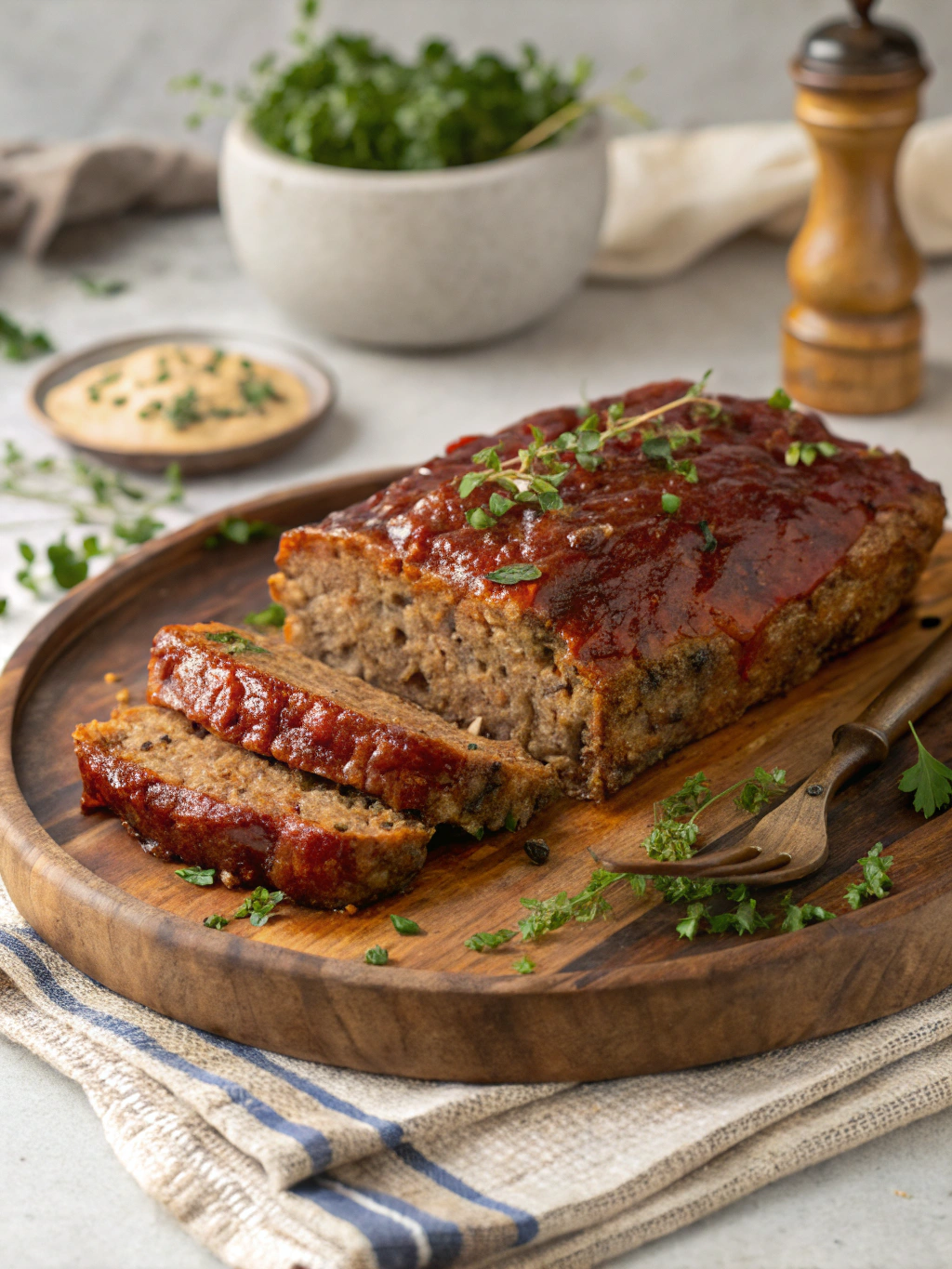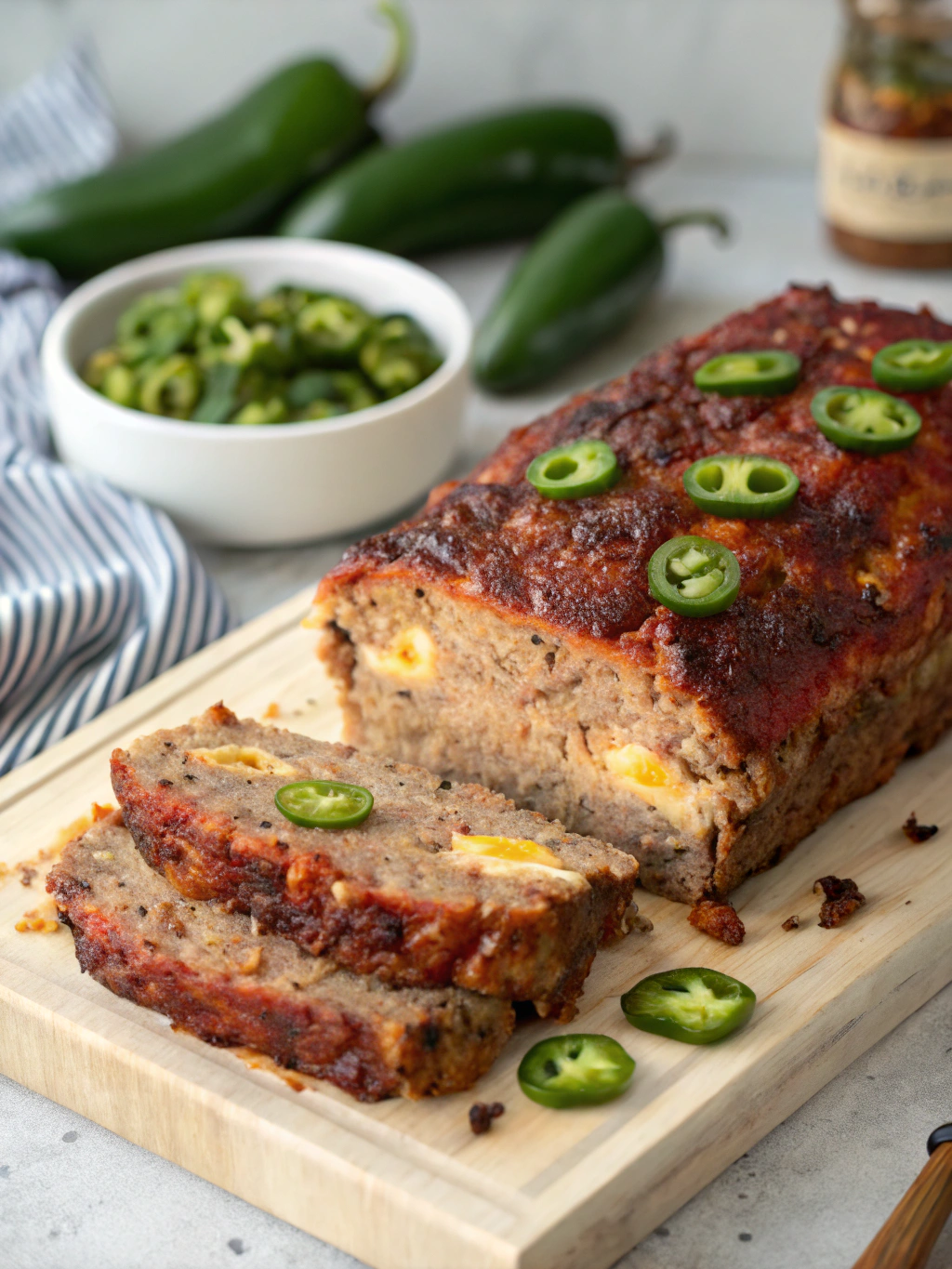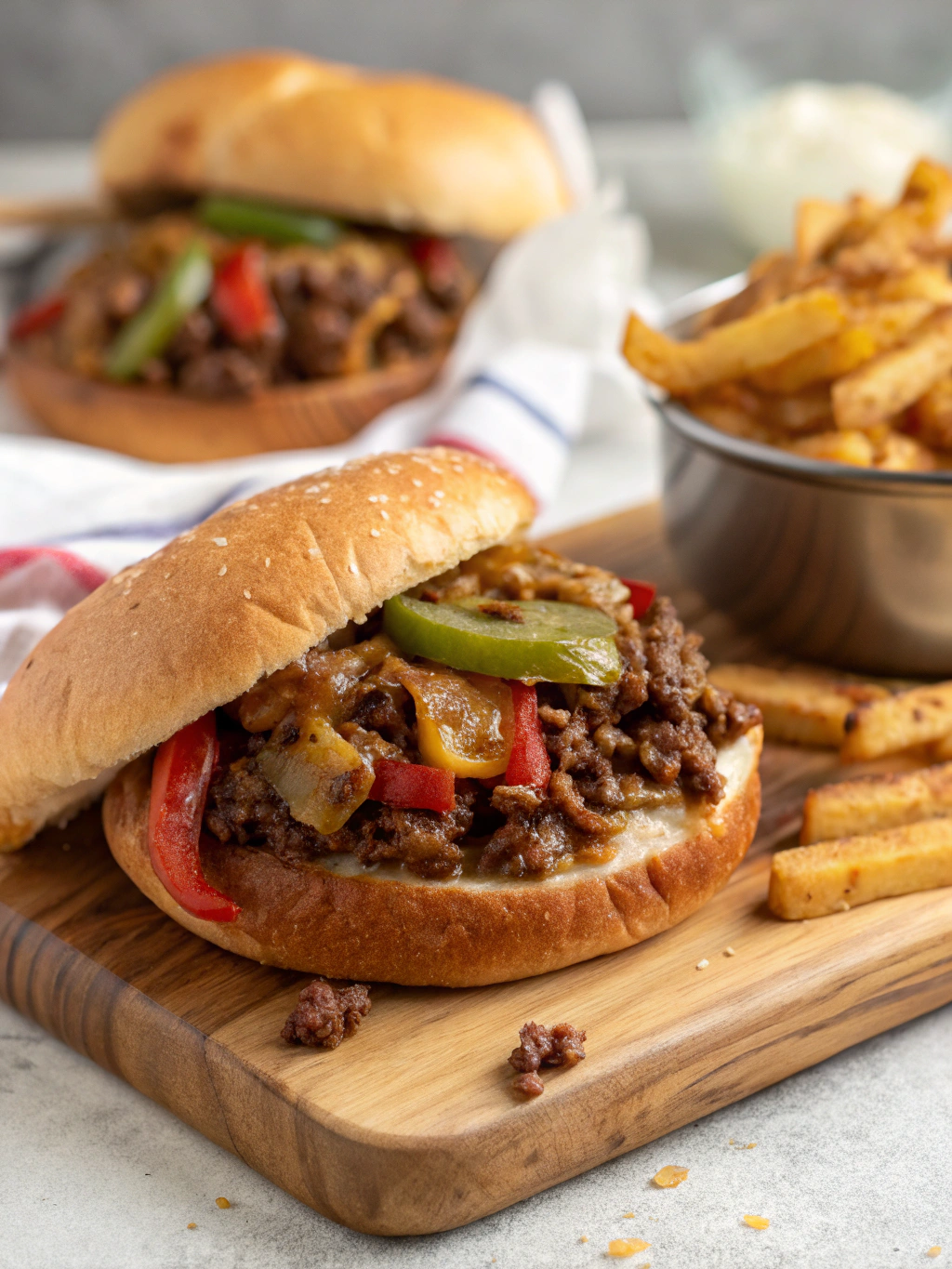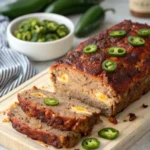Last Updated on April 9, 2025 by recipeinspire
Table of Contents
Introduction to Cauliflower Cooking

The Captivating Culinary Journey of Cauliflower
A Rich Heritage in the Mediterranean and Asia
Coliflor Recipe, a member of the Brassica oleracea family, shares its lineage with broccoli, Brussels sprouts, and kale. This ancient vegetable’s journey began in the 12th or 13th century, originating from the Mediterranean and Asia. Its first documented presence was in Cyprus, marking the start of its culinary voyage.
Spreading Across Europe
From Cyprus, cauliflower made its way to Italy and Rome, alongside its sibling, broccoli. By the 1600s, it had become a staple in the European agricultural landscape. Interestingly, it wasn’t until the era of King Louis XIV of France that cauliflower graced the tables of formal dinners.
Cauliflower’s Culinary Evolution
- Early Beginnings: Cauliflower’s initial use in cuisine was modest, primarily in Mediterranean and Asian dishes.
- Royal Endorsement: The vegetable gained prominence in French cuisine during the reign of King Louis XIV.
- Global Expansion: Over the centuries, cauliflower’s popularity spread worldwide, becoming a key ingredient in various culinary traditions.
Modern-Day Popularity
Today, cauliflower is celebrated for its versatility and nutritional value. It’s a beloved ingredient in dishes ranging from classic roasts to innovative vegan alternatives. Its ability to adapt to different flavors and cooking methods makes it a favorite among chefs and home cooks alike.
Cauliflower in Contemporary Cuisine
Cauliflower’s journey from a humble Mediterranean vegetable to a global culinary star is remarkable. It continues to evolve, finding new expressions in modern dishes and fusion cuisines. Its rich history and versatility make it a vegetable worth exploring in any kitchen.
The Nutritional Powerhouse: Cauliflower
A Treasure Trove of Nutrients
Cauliflower is not just a versatile ingredient in the kitchen; it’s a nutritional powerhouse. This cruciferous vegetable is packed with essential nutrients, making it an excellent addition to any diet. Let’s dive into the nutritional benefits of cauliflower:
- Low in Calories, High in Vitamins: A single cup of raw cauliflower (about 107 grams) contains only 27 calories. Yet, it’s rich in vitamins, including a whopping 58% of the Daily Value (DV) for Vitamin C, 14% of the DV for Vitamin K, and 15% of the DV for Folate.
- Fiber-Rich: With 2 grams of fiber per cup, cauliflower contributes to 7% of your daily fiber needs. Fiber is crucial for digestive health, helping to reduce inflammation and promote a healthy gut.
- Antioxidant Abundance: Cauliflower is a great source of antioxidants like glucosinolates and isothiocyanates, known for their cancer-fighting properties. It also contains carotenoid and flavonoid antioxidants, which may reduce the risk of several diseases, including heart disease.
- Vitamin C Galore: High amounts of Vitamin C in cauliflower act as an antioxidant, known for its anti-inflammatory effects and immune-boosting properties.
Supporting Overall Health
- Weight Loss Friendly: Cauliflower’s low calorie yet high fiber and water content make it ideal for weight loss. It promotes fullness and reduces overall calorie intake.
- Rich in Choline: Essential for brain health and metabolism, cauliflower provides about 10% of the adequate intake for choline, a nutrient many people lack.
- Sulforaphane: This compound in cauliflower has potential benefits in reducing the risk of cancer, heart disease, and diabetes.
- Low-Carb Substitute: Cauliflower can replace grains and legumes in many recipes, making it perfect for low-carb diets.
Selecting and Preparing Cauliflower
Selecting the Perfect Cauliflower: A Guide
Essential Tips for Choosing Cauliflower
When it comes to picking the best cauliflower, a few key tips can ensure you bring home a fresh and flavorful vegetable. Here’s what to look for:
- Firm and Tightly Closed Heads: The ideal cauliflower should have a firm texture with tightly closed florets. This indicates freshness and quality.
- Color Check: For white varieties, look for a very pale color without any dark or ‘sunburned’ spots. Nowadays, cauliflower comes in various colors like orange (Cheddar variety) and lavender (Graffiti variety). These colors should be vibrant and consistent.
- Avoid Softness: Soft spots are a no-go. They indicate the start of spoilage. Always choose heads that are firm throughout.
Storing Your Cauliflower
Cauliflower might seem durable, but it’s actually quite perishable. Here’s how to store it:
- Keep it Wrapped: Store your cauliflower in the crisper drawer of your refrigerator, keeping it tightly wrapped to maintain freshness.
Preparing Your Cauliflower
Cauliflower is versatile and can be prepared in numerous ways. One delicious method is roasting:
- Roasting Method: Break the head into florets and toss them with olive oil, lemon juice, salt, and pepper. Spread them on a baking sheet and roast at 400 degrees until they begin to brown and emit a nutty aroma, about 15 minutes.
A Note on Cauliflower Varieties
- Romanesco: This variety, with its pale green cones, is genetically a cauliflower but often called a broccoli. It’s another excellent choice for those looking for variety in their dishes.
Mastering Basic Cauliflower Preparation Techniques
Versatility in Cooking
Cauliflower, a neutral-flavored and nutrient-rich vegetable, offers endless possibilities in preparation. Its ability to adapt to various cooking methods makes it a favorite in many cuisines. Here are some basic techniques to get the most out of your cauliflower:
Roasting for Flavor
- Method: Preheat your oven to 400 degrees. Wash, dry, and slice the cauliflower into 2-3-inch pieces. Toss with olive oil, salt, and pepper on a sheet pan.
- Cooking Time: Roast for 20 minutes, flipping once. For extra crispiness, extend the time or broil briefly.
- Result: Roasting yields a crisp exterior and soft interior, perfect for absorbing spices and sauces.
Steaming for Simplicity
- Method: Heat water in a pot and place a steamer basket on top. Slice cauliflower into florets and steam for 5-10 minutes.
- Seasoning: Post-steaming, season with salt, pepper, and a pat of butter or olive oil.
- Use: Ideal for cauliflower mash or soup, steaming retains the vegetable’s neutral flavor.
Boiling for Softness
- Method: Boil water, add salt, then cauliflower (cut or whole). Cook uncovered for 10 minutes or until tender.
- Texture: Boiling gives a softer texture compared to steaming, suitable for further cooking or as part of larger dishes.
Grilling for a Charred Taste
- Method: Preheat the grill to medium-high. Slice cauliflower into steaks, coat with oil, and season. Grill each side for 6-7 minutes.
- Result: Grilled cauliflower is a great meat substitute, offering a charred flavor.
Sautéing for Richness
- Method: Heat oil or butter in a pan. Add 1-inch cauliflower pieces, season, and cook for 6-8 minutes.
- Serving Suggestion: Garnish with fresh herbs for added flavor.
Instant Pot for Efficiency
- Method: Cut cauliflower into florets, add water and steamer basket to the Instant Pot. Cook on high pressure for 1-2 minutes.
- Flexibility: Adjust cooking time for desired crispness or softness.
Air Fryer for Crispiness
- Method: Slice cauliflower, coat with oil and seasonings. Air fry at 400 degrees for 15 minutes, flipping midway.
- Serving Idea: Toss in Buffalo sauce or serve with a dipping sauce.
Cauliflower Rice for Low-Carb Options
- Method: Pulse cauliflower florets in a food processor until rice-sized. Sauté or substitute in recipes calling for rice.
- Versatility: Use in fried rice, pilaf, or as a side dish.
Classic Cauliflower Recipes
Crafting the Perfect Roasted Cauliflower
The Art of Roasting Cauliflower
Roasting cauliflower transforms this humble vegetable into a delicious, tender, and golden delight. It’s a simple yet effective way to enhance the natural flavors of cauliflower. Here’s how to master the art of roasting cauliflower:
Ingredients and Preparation
- Cauliflower: Choose a fresh, firm head of cauliflower.
- Seasoning: Olive oil, salt, and pepper are essential. You can also add garlic powder, paprika, or your favorite herbs for extra flavor.
Roasting Steps
- Preheat Oven: Set your oven to 400 degrees Fahrenheit for optimal roasting.
- Prepare the Cauliflower: Wash and dry the cauliflower. Cut it into 2-3-inch florets, ensuring they are of uniform size for even cooking.
- Seasoning: Toss the florets in a mix of olive oil, salt, pepper, and any additional spices you prefer.
- Arrange on Baking Sheet: Spread the cauliflower on a baking sheet in a single layer, giving each piece some space to roast properly.
- Roasting Time: Roast for about 20 minutes. For a more well-done texture, extend the roasting time by 5-10 minutes or broil briefly for extra crispiness.
Serving Suggestions
- As a Side Dish: Serve the roasted cauliflower as a side with your main course.
- In Salads: Add it to salads for a warm, roasted element.
- With Dips: Enjoy it as a snack with your favorite dips.
Why Roast Cauliflower?
- Flavor Enhancement: Roasting brings out a nutty, sweet flavor that’s not present in raw cauliflower.
- Texture: It creates a delightful contrast between a crispy exterior and a tender interior.
- Versatility: Roasted cauliflower can be seasoned in countless ways to match any cuisine.
Crafting a Creamy Cauliflower Soup
The Essence of Cauliflower Soup
Cauliflower soup, with its creamy texture and rich flavor, is a delightful dish that warms the soul. This recipe, adapted from Cookie and Kate, brings out the best in cauliflower, creating a soup that’s both nutritious and delicious.
Ingredients and Preparation
- Cauliflower: A large head, cut into bite-size florets.
- Olive Oil: For roasting and sautéing.
- Onion and Garlic: For a flavor base.
- Vegetable Broth: To simmer the cauliflower.
- Butter: Adds creaminess without cream.
- Lemon Juice and Nutmeg: For subtle, enhancing flavors.
- Garnish: Fresh parsley, chives, or green onions.
Step-by-Step Guide
- Roast the Cauliflower: Toss florets with olive oil and salt, then roast until caramelized.
- Sauté Aromatics: Cook onion until translucent, then add garlic.
- Simmer: Add roasted cauliflower to the pot with vegetable broth and simmer.
- Blend for Creaminess: Transfer to a blender, add butter, and blend until smooth.
- Season: Add lemon juice and nutmeg, adjusting salt to taste.
- Garnish and Serve: Top with fresh herbs for added flavor and texture.
Why This Soup Stands Out
- Roasted Cauliflower: Roasting deepens the cauliflower’s flavor, giving the soup a rich, caramelized base.
- Butter Instead of Cream: This technique lends a luxurious texture without the heaviness of cream.
- Subtle Seasoning: Nutmeg and lemon juice enhance the soup without overpowering it.
Serving Suggestions
- As a Standalone: Perfect as a light meal or starter.
- Pair with Salads or Sandwiches: Complements a variety of dishes.
- Freezable: Make ahead and freeze for a quick, comforting meal.
Dietary Adaptations
- Vegan/Dairy-Free: Substitute butter with soaked cashews for a similar creamy texture.
Crafting a Luxurious Cauliflower and Cheese Bake
The Delight of Cauliflower and Cheese Bake
Cauliflower and Cheese Bake is a classic British dish that combines the comforting flavors of roasted cauliflower with a rich, cheesy sauce. This indulgent side dish, detailed on RecipeTin Eats, can easily become the star of any meal, be it a casual family dinner or a more formal gathering.
Key Ingredients
- Cauliflower: Roasted, not boiled, for better flavor and texture.
- Cheese Sauce: A Mornay sauce made with flour, butter, milk, cream, and a blend of cheeses.
- Cheeses: Red Leicester for sharpness and color, and Gruyère for its nutty flavor and melting qualities.
- Seasoning: Nutmeg adds a classic touch to the béchamel base.
Roasting the Cauliflower
- Preparation: Toss cauliflower florets in oil, salt, and pepper.
- Roasting: Spread on a tray and roast until slightly firm and colored.
Creating the Cheese Sauce
- Roux Base: Cook flour and butter, then gradually add heated milk and cream.
- Cheese Addition: Stir in grated Red Leicester and Gruyère until the sauce thickens.
- Seasoning: Add nutmeg and adjust salt to taste.
Assembling and Baking
- Combine: Mix roasted cauliflower with the cheese sauce.
- Bake: Transfer to a baking dish, top with more cheese, and bake until bubbly and golden.
Why This Dish Stands Out
- Roasted Cauliflower: Enhances flavor, avoiding the watery taste of boiled cauliflower.
- Rich Cheese Sauce: The combination of Red Leicester and Gruyère creates a luxurious, creamy sauce.
- Versatility: Serves as a hearty side dish or a satisfying vegetarian main.
Serving Suggestions
- Pair with Proteins: Complements steaks, roast chicken, pork, or lamb.
- As a Main Dish: Satisfying enough to be enjoyed on its own, especially for vegetarians.
Innovative Cauliflower Dishes
Creating a Cauliflower Pizza Crust
The Innovation of Cauliflower Pizza Crust
Cauliflower Pizza Crust, as detailed on iFoodReal.com, is a game-changer for pizza lovers looking for a low-carb, gluten-free alternative. This crust is not only crispy and delicious but also versatile, allowing you to use fresh, frozen, or cauliflower rice.
Why You’ll Love This Recipe
- Low Carb: With only 4 grams of carbs per slice, it’s a healthier alternative.
- Crispy Texture: Achieves a satisfying crunch, holding up like traditional pizza crust.
- Tasty: While it has a hint of cauliflower flavor, it’s still cheesy and delightful.
- Versatile: Works with fresh or frozen cauliflower, or cauliflower rice.
Ingredients
- Cauliflower: Fresh head or pre-made cauliflower rice.
- Egg: Acts as a binder.
- Parmesan Cheese: Helps bind the crust and adds flavor.
- Seasonings: Italian seasoning, salt, and pepper for taste.
Preparation Steps
- Cook the Cauliflower: Whether using fresh cauliflower or cauliflower rice, cook it until it’s soft.
- Squeeze Out Moisture: This is crucial for a crispy crust. Use a cheesecloth to remove as much water as possible.
- Mix Ingredients: Combine the dry cauliflower with egg, cheese, and seasonings.
- Shape the Crust: Flatten the mixture on a lined baking sheet to your desired thickness.
- Bake: Cook until golden brown and crispy.
Topping Ideas
- Mediterranean Style: Marinara sauce, bell peppers, tomatoes, olives, red onion, feta cheese, and fresh herbs.
- Chicken and Pepper: Marinara sauce, grilled chicken, olives, red onion, and cheese.
- Asian Twist: Honey garlic chicken, broccoli, onion, sriracha, and mozzarella.
Tips for the Best Results
- Squeeze Thoroughly: The key to a crispy crust is removing as much moisture as possible from the cauliflower.
- Even Thickness: Ensure the edges aren’t too thin to prevent burning.
- Moderate Toppings: Avoid overloading the crust to maintain its integrity.
Freezing and Storing
- Freeze for Later: The crust can be baked, cooled, and frozen for up to 3 months.
- Reheat Instructions: Bake the frozen crust at 400 degrees F for 10 minutes, then add toppings and bake for an additional 5-10 minutes.
Crafting Smoky Cauliflower Tacos
The Allure of Cauliflower Tacos
Cauliflower Tacos, as featured on Minimalist Baker, offer a delightful twist on traditional tacos. These tacos are not only plant-based and gluten-free but also come with an optional oil-free and grain-free preparation. The combination of smoky, roasted cauliflower and a spicy chipotle romesco sauce creates a flavorful and satisfying meal.
Why These Tacos Are a Must-Try
- Flavorful: The smoky and spicy notes make these tacos irresistibly tasty.
- Healthy: A plant-based option that’s both nutritious and satisfying.
- Easy to Make: Ready in just 30 minutes, perfect for a quick, healthy meal.
- Versatile: Suitable for various dietary preferences, including gluten-free and vegan.
Ingredients
- Cauliflower: Roasted to perfection for a smoky flavor.
- Spices: A blend of ground cumin, chili powder, and smoked paprika.
- Sauce: A romesco-inspired sauce with almonds, garlic, fire-roasted tomatoes, lime juice, and chipotle peppers.
- Tortillas: Corn tortillas to keep it grain-free or plantain tortillas for an alternative.
Preparation Steps
- Roast the Cauliflower: Toss cauliflower pieces with oil and spices, then roast until golden and tender.
- Make the Sauce: Blend roasted almonds, garlic, tomatoes, and other sauce ingredients until smooth.
- Assemble the Tacos: Warm the tortillas and add a layer of sauce, followed by a generous portion of cauliflower.
- Garnish: Enhance with lime juice, cilantro, cabbage, pepitas, or avocado.
Serving Suggestions
- Customize Your Toppings: Experiment with different toppings like fresh herbs, sliced cabbage, or avocado.
- Pair with Drinks: Complement with a refreshing beverage like a ginger beer margarita.
Exploring Vegan Cauliflower Options
The Versatility of Cauliflower in Vegan Cooking
Cauliflower has emerged as a star in vegan cuisine, known for its versatility and ability to absorb a variety of flavors. From Forks Over Knives, here are some creative and delicious vegan cauliflower recipes that showcase this vegetable’s potential.
Why Cauliflower is a Vegan Favorite
- Mild Flavor: Cauliflower’s subtle taste makes it perfect for a range of seasonings.
- Texture: It can be transformed into anything from a creamy sauce to a meaty substitute.
- Nutrient-Rich: Cauliflower is packed with vitamins and minerals, making it a healthy choice.
Innovative Vegan Cauliflower Recipes
- Curried Butternut Squash and Cauliflower Stew: A nourishing curry with butternut squash and riced cauliflower in a coconut milk base.
- Cauliflower Pasta Salad Lettuce Wraps: A fresh and comforting salad with a cheesy cashew dressing, perfect in lettuce wraps.
- Roasted Cauliflower Hummus: A twist on traditional hummus with roasted cauliflower and garlic for a smoky-sweet flavor.
- Vegan Shawarma with Roasted Cauliflower and Chickpeas: A flavorful grain bowl with cauliflower and chickpeas roasted in a Mediterranean spice blend.
- Creamy Roasted Cauliflower Soup: A blend of potato and cauliflower, seasoned with nutmeg, white wine vinegar, and cayenne.
- Delicata Squash Boats with Cauliflower Bechamel: A creative dish featuring a creamy vegan cauliflower bechamel sauce.
- Gluten-Free Gnocchi with Roasted Vegetables: Cauliflower-based gnocchi served with roasted squash, Brussels sprouts, mushrooms, and almond-balsamic cream.
- Cauliflower Rice Bowls with Vegan Pesto: A healthy and flavorful salad with riced cauliflower, brown rice, and vegan pesto.
- BBQ Cauliflower and Pineapple Pizza: A plant-based pizza with barbecue-flavored cauliflower and sweet pineapple on a whole grain crust.
- Roasted Cauliflower and Sweet Potato Soup: A soup with curry-seasoned roasted vegetables, garnished with roasted quinoa.
International Cauliflower Delicacies
Spanish Garlic Cauliflower: A Taste of Spain
The Essence of Spanish-Style Cauliflower
Spanish Garlic Cauliflower, a classic tapas dish from Spain, particularly the Canary Islands, is a simple yet flavorful way to enjoy cauliflower. This recipe, featured on Spain on a Fork, highlights the vegetable’s versatility and the rich flavors of Spanish cuisine.
Why This Dish Stands Out
- Simple Ingredients: Made with minimal ingredients, each element shines through.
- Quick and Easy: Ready in under 30 minutes, perfect for a quick, flavorful meal.
- Versatile: Serve as a tapas appetizer or a side dish.
Key Ingredients
- Cauliflower: The star of the dish.
- Extra Virgin Olive Oil: Preferably Spanish, for authentic flavor.
- Garlic: Adds depth and aroma.
- Sweet Smoked Spanish Paprika: Provides a smoky, sweet flavor.
- Fresh Parsley: For garnish and freshness.
Preparation Steps
- Boil Cauliflower: Cook florets in salted boiling water until tender but firm.
- Sauté Garlic: In olive oil, then add paprika.
- Combine: Toss the cauliflower with the garlic-paprika oil.
- Season: With sea salt and black pepper.
- Garnish: With finely chopped parsley.
Tips for Perfect Cauliflower
- Even Floret Size: Cut larger florets into smaller ones for uniform cooking.
- Don’t Overcook: Cauliflower should be tender but not mushy.
- Quality Ingredients: Use high-quality olive oil and paprika for the best flavor.
Serving Suggestions
- As Tapas: Pair with other Spanish tapas like tomato salad or a Spanish omelette.
- As a Side Dish: Complement with grilled meats or seafood.
Najib’s Special Lebanese Cauliflower: A Middle Eastern Delight
Exploring the Richness of Middle Eastern Cauliflower Dishes
Middle Eastern cuisine offers a treasure trove of cauliflower dishes, each bursting with unique flavors and spices. One such dish is Najib’s Special Lebanese Cauliflower, a popular recipe from Nuba restaurant in Vancouver, featured on The Endless Meal. This dish exemplifies the region’s culinary artistry, turning a simple vegetable into a mouthwatering delight.
Why This Dish is a Must-Try
- Flavorful: Rich in spices and seasonings typical of Middle Eastern cuisine.
- Versatile: Can be served as an appetizer, side dish, or part of a mezze platter.
- Simple Ingredients: Made with easily accessible ingredients.
Key Ingredients
- Cauliflower: The centerpiece of the dish.
- Lemon Juice: Adds a refreshing tang.
- Cumin: Provides a warm, earthy flavor.
- Olive Oil: Enhances richness and depth.
Preparation Steps
- Roast the Cauliflower: Toss cauliflower florets in olive oil, lemon juice, and spices, then roast until golden and tender.
- Seasoning: Enhance with a sprinkle of cumin and other spices after roasting.
- Serve: Garnish with fresh herbs or a squeeze of lemon.
Serving Suggestions
- As a Side Dish: Complement with grilled meats or fish.
- In a Mezze Platter: Pair with hummus, baba ganoush, and other Middle Eastern favorites.
Sesame Cauliflower: An Asian-Inspired Culinary Creation
Delving into Asian-Inspired Cauliflower Dishes
Asian cuisine is renowned for its vibrant flavors and inventive use of vegetables. One standout dish is Sesame Cauliflower, a simple yet incredibly flavorful Asian-inspired vegetarian meal. This recipe, featured on Delicious Little Bites, takes just 20 minutes to prepare, making it an ideal choice for a quick and delicious dinner.
Why Sesame Cauliflower is a Must-Try
- Flavorful: The combination of crispy cauliflower and sweet, sticky sesame sauce is irresistible.
- Versatile: Easily adaptable to be spicier or to fit dietary preferences like vegan or gluten-free.
- Quick and Easy: Ready in just 20 minutes.
Key Ingredients
- Cauliflower: Cut into bite-sized florets.
- Soy Sauce: For umami flavor.
- Cornstarch: To create a crispy coating.
- Honey or Agave: Adds sweetness to the sauce.
- Sesame Oil: For a nutty aroma.
- Garlic and Ginger: For depth of flavor.
Preparation Steps
- Batter the Cauliflower: Toss florets in a soy sauce and cornstarch mixture.
- Fry: Cook until browned and crispy.
- Make the Sauce: Combine water, soy sauce, honey/agave, rice vinegar, sesame oil, garlic, ginger, and cornstarch.
- Combine: Toss the crispy cauliflower in the sauce.
- Garnish: With sesame seeds and sliced green onions.
Serving Suggestions
- Over Rice or Noodles: Serve as a main dish over a bed of rice, noodles, or spaghetti squash.
- As a Side Dish: Complements other Asian-inspired dishes beautifully.
Cooking Tips and Tricks
Mastering Cauliflower Cooking: Best Practices
Unlocking the Potential of Cauliflower
Cauliflower, a versatile and nutrient-rich vegetable, can be cooked in various ways, each bringing out unique flavors and textures. Understanding the best practices for cooking cauliflower is key to making the most of this vegetable. This guide, inspired by Live Eat Learn, will walk you through different methods to cook cauliflower perfectly.
Why These Methods Work
- Preserves Nutrients: Techniques like steaming retain more vitamins and minerals.
- Enhances Flavor: Methods like roasting bring out natural sweetness.
- Versatility: Different methods suit different dishes and preferences.
Cooking Methods and Tips
- Microwaving Cauliflower
- Quick and Easy: Ideal for a fast side dish.
- Method: Place florets in a microwave-safe bowl with water, cover, and microwave for 4-5 minutes.
- Tip: Check at 4 minutes to prevent overcooking.
- Steaming Cauliflower
- Nutrient-Rich: Retains most vitamins and minerals.
- Method: Steam florets in a basket over boiling water for 5-7 minutes.
- Tip: Steam until tender yet crisp for the best texture.
- Blanching Cauliflower
- Crisp and Tender: Preserves nutrients and texture.
- Method: Boil florets for 2-3 minutes, then plunge into ice water.
- Tip: Blanch and shock for the same duration for even cooking.
- Sautéing Cauliflower
- Caramelized Flavor: Creates a crisp exterior.
- Method: Sauté florets in oil, then steam with a bit of water.
- Tip: Cook until they start browning, then cover to steam.
- Roasting Cauliflower
- Sarah’s Pick: Brings out natural sweetness.
- Method: Toss with oil and spices, roast at 400°F for 20-25 minutes.
- Tip: Spread in a single layer for even roasting.
Utilizing Cauliflower Stems
- Don’t Discard: Stems are flavorful and nutrient-dense.
- Preparation: Trim tough parts, then slice for cooking.
- Use in Dishes: Add to cauliflower rice or risotto.
Additional Cooking Tips
- Clean Thoroughly: Rinse well to remove dirt and debris.
- Uniform Florets: Cut evenly for consistent cooking.
- Herbs and Spices: Season well to enhance flavor.
Effective Ways to Store and Preserve Cauliflower
Ensuring Freshness and Longevity of Cauliflower
Cauliflower, a versatile and nutritious vegetable, can be stored and preserved in various ways to maintain its freshness and extend its shelf life. According to MasterClass, understanding the best methods to store and preserve cauliflower is essential for anyone looking to make the most of this vegetable.
Why Proper Storage Matters
- Maintains Freshness: Proper storage keeps cauliflower crisp and fresh.
- Prevents Waste: Extends the life of the vegetable, reducing food waste.
- Versatility: Different methods suit different future uses of the cauliflower.
Storage and Preservation Methods
- Refrigerator Storage
- Method: Wrap the whole head in a perforated plastic bag and place in the crisper drawer.
- Orientation: Store stem-up to avoid condensation on the head.
- Shelf Life: Lasts about five days.
- Pre-Cut Storage: Dry florets, store in an airtight container in the fridge for 4-5 days.
- Freezing Cauliflower
- Preparation: Blanch florets in boiling water for three minutes, then shock in ice water.
- Freezing Process: Arrange blanched florets on a baking sheet, freeze, then transfer to a freezer bag.
- Shelf Life: Can be kept frozen for up to a year.
- Pickling Cauliflower
- Method: Pickle in vinegar or make a recipe like Italian giardiniera.
- Canning: Can be canned for long-term shelf storage.
- Shelf Life: Lasts for years when canned.
Additional Tips for Cauliflower Storage
- Buy Fresh: Look for creamy white cauliflower with firm green leaves.
- Skip Washing Before Storage: Wash just before use to prevent moisture buildup.
- Salt in Blanching Water: Add salt to boiling water when blanching to preserve texture.
FAQs
How to make cauliflower rice?
Transforming Cauliflower into a Versatile Rice Alternative
Cauliflower rice is a fantastic low-carb, grain-free alternative to traditional rice. It’s easy to make and can be used in a variety of dishes. The process, detailed on Minimalist Baker, involves turning cauliflower into rice-sized pieces. This versatile creation is perfect for those looking to increase their vegetable intake or seeking a lighter substitute for rice.
Why Cauliflower Rice?
- Low-Carb Option: Great for those reducing carbohydrate intake.
- Versatile: Can be used in stir-fries, burrito bowls, or as a side dish.
- Nutrient-Rich: Cauliflower is packed with fiber, vitamins, and antioxidants.
Making Cauliflower Rice
- Preparation
- Wash and Dry: Start with a clean, dry head of cauliflower.
- Remove Greens: Take off all the leaves.
- Grating the Cauliflower
- Using a Box Grater: Grate the cauliflower using the medium-sized holes.
- Food Processor Method: Cut into small pieces and use the grater attachment.
- Removing Excess Moisture (Optional)
- Pressing: Transfer grated cauliflower to a towel and press to remove moisture.
- Benefit: Prevents sogginess in the final dish.
- Cooking Cauliflower Rice
- Sautéing: Cook in a skillet with a bit of oil, covered, for 5-8 minutes.
- Seasoning: Add soy sauce, salt, pepper, or other seasonings as desired.
Storing Cauliflower Rice
- Raw Cauliflower Rice: Best used immediately or frozen for later use.
- Cooked Cauliflower Rice: Stores well in the fridge for about 4 days.
- Freezing: Freeze uncooked rice in a sealed container for up to a month.
Why do you soak cauliflower before cooking?
Enhancing Cauliflower’s Quality and Safety
Soaking cauliflower before cooking is a crucial step in its preparation. This process, as explained on RecipeTips.com, is not just about cleaning the vegetable but also about ensuring its quality and safety for consumption.
Why Soaking is Essential
- Removes Impurities: Cauliflower can harbor dirt, debris, and insects in its florets.
- Improves Safety: Soaking helps to dislodge and remove any hidden pests or contaminants.
- Enhances Flavor and Texture: Clean cauliflower cooks more evenly and tastes better.
Soaking Process
- Preparation
- Initial Cleaning: Rinse the cauliflower head to remove surface dirt.
- Cutting: Break down the cauliflower into smaller florets for thorough soaking.
- Soaking Solution
- Salt Water: Soak in salt water to help force out insects and dirt.
- Vinegar Water Option: Alternatively, use a mixture of vinegar and water.
- Duration
- Soaking Time: Allow the florets to soak for a few minutes to ensure effectiveness.
- Post-Soaking Steps
- Rinsing: After soaking, rinse the cauliflower thoroughly under running water.
- Drying: Pat dry with a clean towel to remove excess moisture.
Additional Tips
- Check for Freshness: Choose cauliflower that is creamy white with firm green leaves.
- Storage: Store unwashed cauliflower in the refrigerator to maintain freshness.
- Cooking Methods: Cauliflower can be steamed, boiled, sautéed, stir-fried, or microwaved.
What is the best way to eat cauliflower?
Unleashing the Versatility of Cauliflower
Cauliflower, a low-carb and nutrient-rich vegetable, can be enjoyed in numerous delicious ways. As highlighted on Thinlicious, cauliflower’s versatility makes it a favorite in various diets, especially keto, due to its low carbohydrate content and high nutritional value. Here are some of the best ways to savor cauliflower, ensuring both health benefits and culinary delight.
Why Cauliflower is a Culinary Star
- Low in Carbs: Ideal for keto and low-carb diets.
- High in Nutrients: Rich in vitamin C, B6, potassium, and magnesium.
- Adaptable: Can be transformed into a range of dishes.
Top Ways to Enjoy Cauliflower
- Cauliflower Pizza
- Preparation: Combine cauliflower rice with cheese and egg for the crust.
- Toppings: Customize with low-carb toppings like cheese and vegetables.
- Low-Carb Shepherd’s Pie
- Twist: Replace traditional potatoes with cauliflower mash.
- Result: A comforting, hearty meal with fewer carbs.
- Creamy Cauliflower Soup
- Features: Rich in flavor with ingredients like cheddar cheese and bacon.
- Cooking Method: Easily prepared in an Instant Pot.
- Eggplant Couscous with Cauliflower
- Style: Middle Eastern dish with fresh herbs and spices.
- Serving: As a main course or a side dish.
- Cauliflower Mac and Cheese
- Sauce: Cream cheese, mozzarella, and heavy cream for a rich cheese sauce.
- Bonus: Includes bacon for added flavor.
- Cauliflower Sides
- Varieties: Mashed cauliflower, cauliflower rice, and roasted cauliflower.
- Flavoring: Enhance with garlic, onion powder, or cheese.
- Cauliflower Snacks and Appetizers
- Options: Cauliflower bacon popcorn, low-carb sushi, and cauliflower cheese bread.
- Versatility: Perfect for healthy snacking or entertaining.
How long does it take to boil cauliflower?
Achieving the Ideal Texture in Boiled Cauliflower
Boiling cauliflower is a quick and straightforward method to prepare this nutritious vegetable. According to Loaves and Dishes, the key to perfectly boiled cauliflower lies in the timing and preparation. Here’s how to ensure your boiled cauliflower turns out just right.
Why Boiling Cauliflower Works
- Quick and Easy: Ready in under 10 minutes.
- Versatile: Prepares cauliflower for various recipes or to be enjoyed as is.
- Texture: Achieves a tender yet firm consistency.
Boiling Process
- Preparation
- Cutting: Separate the florets from the main stalk.
- Rinsing: Clean the florets under running water.
- Boiling Steps
- Water: Place florets in a saucepan and cover with water.
- Heating: Bring to a full boil over high heat.
- Cooking Time: Boil for 5-7 minutes until fork-tender.
Determining Cooking Time
- Floret Size: Smaller pieces cook faster, typically in 5 minutes.
- Whole Head: A whole head of cauliflower takes about 10-15 minutes.
- Frozen Cauliflower: Frozen florets are ready in about 5 minutes.
Post-Boiling Tips
- Draining: Drain well to remove excess water.
- Seasoning: Enhance with butter, garlic, or herbs for added flavor.
- Serving: Enjoy as a side dish or use in recipes like mashed cauliflower.
Conclusion
Cauliflower: A Nutritional Powerhouse and Culinary Chameleon
Celebrating the Health Benefits and Versatility of Cauliflower
Cauliflower, a cruciferous vegetable, is not only a nutritional superstar but also a versatile ingredient in the kitchen. As described on Mayo Clinic Health System, cauliflower’s health benefits and culinary flexibility make it an excellent choice for various diets and culinary experiments.
Why Cauliflower is a Superfood
- Nutrient-Rich: High in vitamins C and K, and a good source of folate.
- Low-Calorie: Contains only 25 calories per cup.
- Dietary Fiber: Offers 2 grams of fiber per serving.
- Versatile: Can be eaten raw, cooked, riced, or used as a low-carb substitute.
Culinary Uses of Cauliflower
- Raw or Cooked: Enjoy it in salads, as a snack, or cooked as a side dish.
- Cauliflower Pizza Crust: A low-carb alternative to traditional pizza crust.
- Mashed Cauliflower: A substitute for mashed potatoes.
- Cauliflower Rice: Replaces white rice in dishes.
- Roasted or Grilled: Enhances its natural flavors.
Health Benefits
- Cancer Prevention: Contains compounds that may reduce the risk of cancer.
- Supports Cell Growth: Folate content is essential for cell development.
- Heart Health: Low in sodium, fat-free, and cholesterol-free.
Choosing and Storing Cauliflower
- Selection: Look for tight, creamy-white curds and bright-green leaves.
- Storage: Store unwashed in a loosely sealed bag in the fridge for 4-7 days.
Embarking on a Culinary Adventure with Cauliflower
Exploring the Creative World of Cauliflower Recipes
Cauliflower, far from being a bland or boring vegetable, opens up a world of culinary possibilities. As showcased on Bon Appétit, this versatile vegetable can be transformed into a myriad of delicious dishes, encouraging you to step out of your culinary comfort zone and try something new.
Why Try New Cauliflower Recipes?
- Diverse Flavors: Cauliflower’s mild taste makes it perfect for a variety of flavor profiles.
- Health Benefits: Rich in nutrients, it’s a guilt-free addition to any meal.
- Culinary Creativity: Offers a chance to experiment with new cooking techniques.
Exciting Cauliflower Recipes to Try
- Cauliflower Tacos with Cashew Crema: A delightful twist on traditional tacos.
- Creamy Cauliflower Soup with Cheesy Mustard Croutons: A comforting and flavorful soup.
- Buffalo Cauliflower: A spicy and tangy snack or side dish.
- Cauliflower Pizza Crust: A low-carb alternative for pizza lovers.
- Air Fryer Cauliflower Tots: A crispy and healthy snack option.
Tips for Buying and Storing Cauliflower
- Selection: Look for compact heads with crisp leaves.
- Storage: Keep in a loose or perforated bag in the fridge for up to a week.
Encourage the joy of exploration! Take a moment to discover the incredible posts shared by others:








